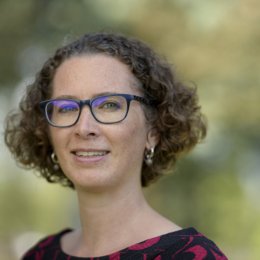University of Twente researcher Dr ir Saskia Lindhoud and PhD candidate ir Jéré van Lente have achieved a breakthrough in their research on separating molecules. Their research was published this week in Wiley’s international journal Small, in the Rising Stars series.
Lindhoud explains: “Our method to separate molecules could be useful for the recovery and recycling of valuable residual medicine molecules from waste water and it may even help in the recovery of certain chemical substances from waste water so that we can become less dependent on oil in the future. Unfortunately, we have not reached this point yet; we are still trying to understand this separation process in all its details. Our findings do, however, form a big stride in the right direction.”
Research process
Lindhoud and Van Lente simply used a packet of egg protein powder from the supermarket for their research. This powder contains a reasonable concentration of an enzyme known as ‘lysozyme’. Lindhoud: “Our results show that we can indeed selectively extract lysozyme from this egg protein mixture. Furthermore, the lysozyme remains active. The method we use to separate the lysozyme molecules does not affect the structure of the enzyme and the enzyme is still able to break down its substrate. It is important that a separation procedure does not affect the properties biological molecules like enzymes .”
The separation of molecules
Lindhoud is inspired by separation processes in biological systems. Cells are, for example, extremely good at ensuring that the right molecules are at the right place to participate in biological processes. One way in which they realise this is by using compartments. In the classical view of the cell, these compartments are surrounded by a membrane and are known as organelles. These organelles float in cytosol, the intracellular fluid.
However, it appears that the cytosol is very structured and also comprises compartments, which are called ‘membraneless organelles’. They look like droplets and form through water-in-water phase separation. One hypothesis is that these membraneless organelles are responsible for ensuring that the right molecules are at the right place at the right time. Lindhoud: “If we understand how membraneless organelles can separate so precisely, we may be able to use this for separating components in chemical processes. Many membraneless organelles form via interactions between positively and negatively charged groups on proteins and RNA.
In our laboratory, we simulate this using positively and negatively-charged polymers. A polymer is a long molecule consisting of a long chain of equal parts known as monomers. The polymers we use have monomers that are either positively or negatively charged. If you mix solutions of these positively and negatively charged polymers, droplet-like structures are formed which have properties similar to those of membraneless organelles. Like membraneless organelles, our model droplets can selectively extract one protein, in our case, lysozyme, from a complex protein mixture.”
Further information
Dr ir Saskia Lindhoud is an Assistant Professor in the Molecular Nano-Fabrication group at the University of Twente (Faculty of Science and Technology). Her PhD candidate ir Jéré van Lente will defend his PhD for this research on 17 March 2022.






